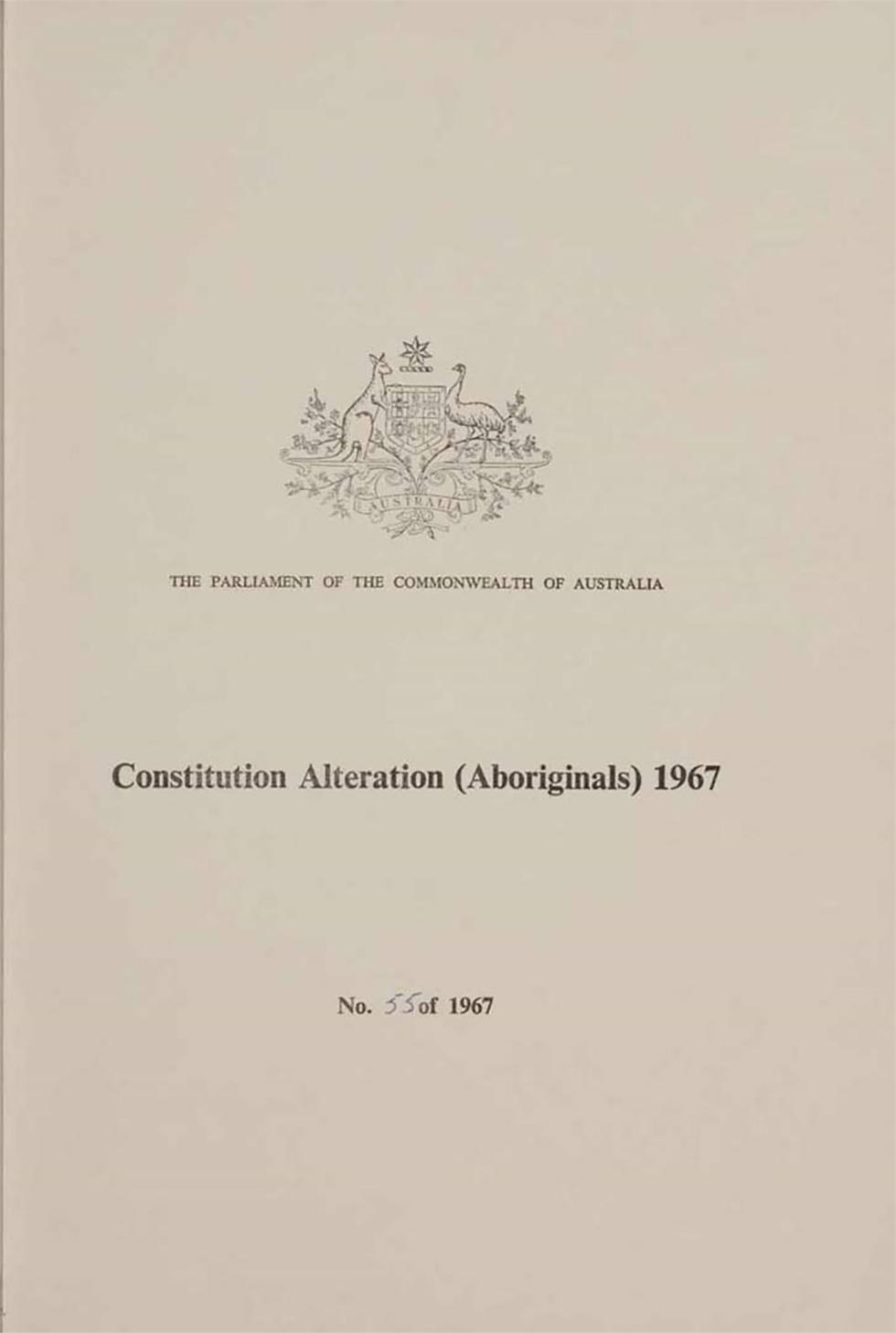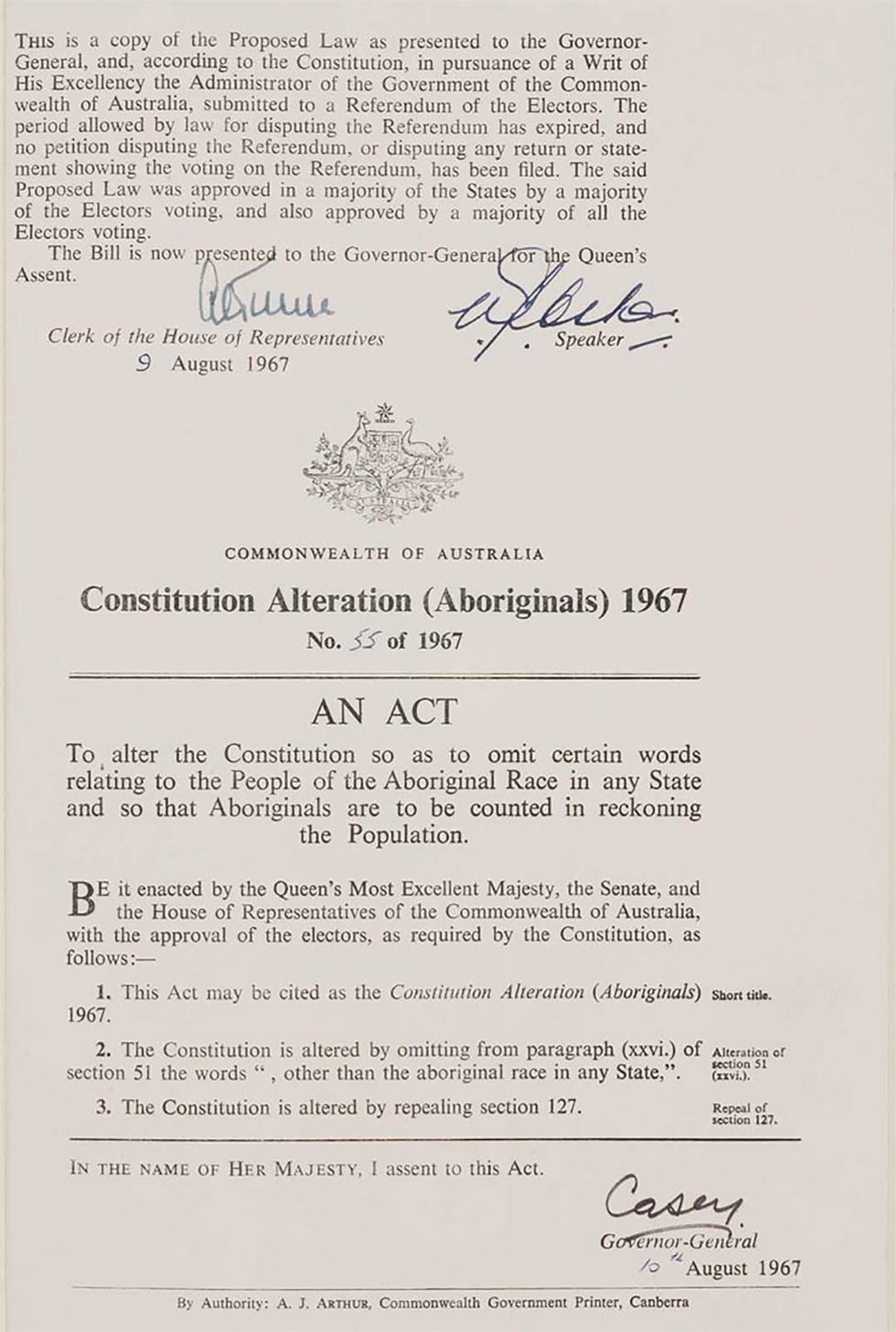

Aboriginal and Torres Strait Islander people should be aware that the National Archives' website and collection contain the names, images and voices of people who have died.
Some records include terms and views that are not appropriate today. They reflect the period in which they were created and are not the views of the National Archives.



[Page 1]
[Line drawing of the Commonwealth of Australia coat of arms]
THE PARLIAMENT OF THE COMMONWEALTH OF AUSTRALIA
[Main heading] Constitution Alteration (Aboriginals) 1967
No. 55 of 1967
[Page 2]
This is a copy of the Proposed Law as presented to the Governor-General, and according to the Constitution, in pursuance of a Writ of His Excellency the Administrator of the Government of the Commonwealth of Australia, submitted to a referendum of the Electors. The period allowed by law for disputing the Referendum has expired, and no petition disputing the Referendum, or disputing any return or statement showing the voting on the Referendum, has been filed. The said Proposed Law was approved in a majority of States by a majority of all the Electors voting, and also approved by a majority of all the Electors voting.
The Bill is now presented to the Governor-General for the Queen’s Assent.
A G Turner [Handwritten signature]
Clerk of the House of Representatives
9 August 1967
W J Aston [Handwritten signature]
Speaker
[Line drawing of the Commonwealth of Australia coat of arms]
COMMONWEALTH OF AUSTRALIA
[Main heading] Constitution Alteration (Aboriginals) 1967
No. 55 of 1967
[dividing line]
AN ACT
To, alter the Constitution so as to omit certain words relating to the People of the Aboriginal Race in any State and so that Aboriginals are to be counted in reckoning the Population.
Be it enacted by the Queen’s Most Excellent Majesty, the Senate, and the House of Representatives of the Commonwealth of Australia, with the approval of the electors, as require by the Constitution, as follows:-
1. This Act may be cited as the Constitution Alteration (Aboriginals) 1967.
[Marginal note: ‘Short title.’]
2. The Constitution is altered by omitting from paragraph (xxvi.) of section 51 the words “, other than the aboriginal race in any State, “.
[Marginal note: ‘Alteration of section 51 (xxvi.).’]
3. The Constitution is altered by repealing section 127.
[Marginal note: ‘Repeal of section 127.’]
[dividing line]
IN THE NAME OF HER MAJESTY, I assent to this Act.
Casey [Handwritten signature]
Governor-General
10th August 1967
[In small text at the bottom of the page] By Authority: A. J. ARTHUR, Commonwealth Government Printer, Canberra
Following the publication of the 1967 referendum results, the Constitution Alteration (Aboriginals) 1967 was presented to His Excellency the Honourable RG Casey, Governor-General, for his signature. The Constitution empowers the Governor-General—as the Queen’s representative—to sign the Royal Commission of Assent on all new Acts of Parliament (or in this case, the constitutional alteration voted for by the Australian people).
Learn how to interpret primary sources, use our collection and more.
